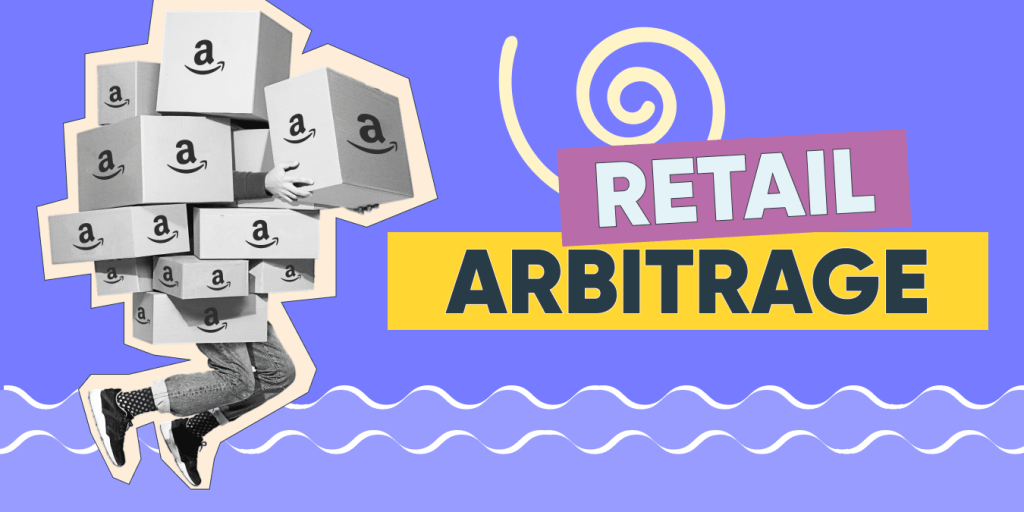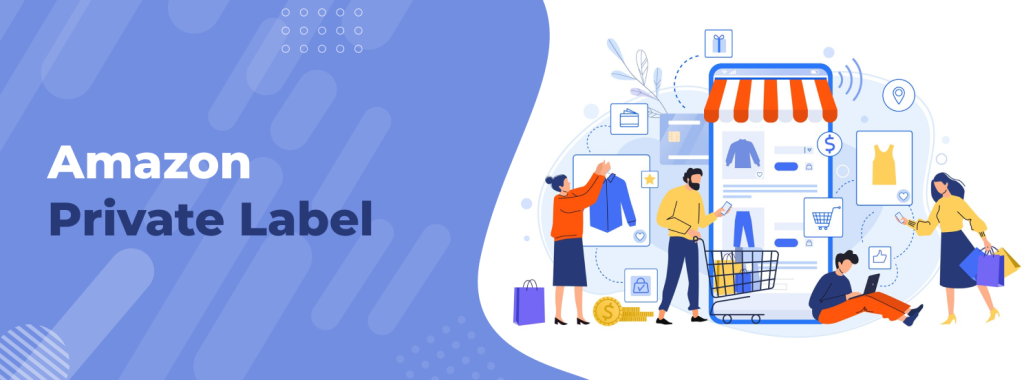If you’re looking to make a bang in the e-commerce world, Amazon most certainly needs to be in your sights. With over 2.5 million active sellers on the platform, it’s obvious that the thrill of online selling is alive and well. But, as you dive into this bustling marketplace, you’ll quickly realize there are several paths to making it big on Amazon.
Three of the most common business models are Amazon Retail Arbitrage, Amazon Wholesale, and Amazon Private Label. Each has its own perks and pitfalls, and understanding these is crucial to deciding which path you should choose. So, let’s strap in and explore these models together.
Amazon Retail Arbitrage Vs Amazon Wholesale Vs Amazon Private Label: Quick Comparison
|
Aspect |
Retail Arbitrage |
Wholesale |
Private Label |
|
Definition |
Buying products at low retail prices, reselling at higher prices on Amazon. |
Purchasing products in bulk from manufacturers, selling on Amazon. |
Selling products under your brand on Amazon. |
|
Startup Capital |
Relatively low |
Medium |
High |
|
Profit Margins |
Low to Medium |
Medium to High |
High |
|
Time Commitment |
Moderate |
Moderate |
High |
|
Control Over Products |
Least control |
More control |
Most control |
|
Market Research |
Focused on finding retail deals |
Identifying products with market demand |
Identifying niche markets and trends |
|
Supplier Relationships |
Not applicable |
Necessary for sourcing products |
Necessary for manufacturing and sourcing |
|
Potential for Scaling |
Limited scalability |
Moderate scalability |
High scalability |
|
Recommendation |
Entry-level option for beginners |
Intermediate level with potential for growth |
Advanced level with substantial investment |
Amazon Retail Arbitrage: What Is It and How Does It Work?
Amazon Retail Arbitrage is a fascinating version of the buy low, sell high strategy that many entrepreneurs have successfully employed. In essence, it’s about purchasing products at low prices from retail stores and then selling them on Amazon at a higher price. The beauty of retail arbitrage lies in its simplicity and the relatively small startup capital required.

How Does It Work?
- Product Sourcing: This involves finding products that are being sold at a discount in retail stores. Many arbitrageurs use apps like Repricer Express to compare in-store prices with Amazon.
- Listing the Products: After purchasing, you list the product on Amazon. Ensure you provide an accurate description and high-quality photos to attract potential buyers.
- Selling and Fulfilling Orders: Once a customer purchases your product, you can either fulfill the order yourself or use Amazon’s FBA service. With Fulfillment By Amazon (FBA), Amazon handles storage, packaging, and shipping on your behalf.
To succeed in retail arbitrage, it helps to understand price fluctuations and be good at spotting deals. It’s also crucial to account for Amazon’s fees and your shipping costs to ensure you still make a profit.
Remember, the key to successful retail arbitrage is being able to buy low and sell high. This requires a keen eye for deals and an understanding of market trends.
Amazon Wholesale: What Is It and How Does It Work?
Amazon Wholesale is a model where you purchase products in bulk from manufacturers or distributors and then sell them on Amazon. It’s like being a middleman who adds value by making the products more accessible to Amazon’s massive customer base. The key to success here is finding the right products and securing them at a low enough price to make a profit after Amazon’s fees.
How it Works

First, you need to identify products that are selling well on Amazon, but you think you could sell for less. Next, you find a supplier who can sell you these products at a low enough price for you to make a profit.
After securing your inventory, you ship it to one of Amazon’s fulfillment centers. When a customer orders your product, Amazon handles the storage, packaging, and shipping. They also handle customer service and returns.
This model is attractive because it allows you to leverage Amazon’s infrastructure and customer base. However, success requires a good understanding of the market and solid relationships with suppliers.
You can learn more about Amazon Wholesale here.
Amazon Private Label: What Is It and How Does It Work?
Amazon Private Label involves selling products under your own brand name on Amazon. You, as a seller, source these products from manufacturers, but then you brand and market them as your own. This approach stands out when compared to Retail Arbitrage and Wholesale as it provides sellers the opportunity to build their own brand on Amazon’s platform.

Here is how it works:
- Product Selection: The first step involves identifying a product that you believe will perform well on Amazon. This involves market research, competitor analysis, and understanding Amazon’s algorithms.
- Sourcing Products: Once you have a product in mind, the next step is to find a manufacturer who can produce it. This step could involve local sourcing or international sourcing, primarily from countries like China.
- Branding and Packaging: After sourcing, you need to brand the products. This involves creating a logo, packaging design, and other branding elements that make your product unique.
- Listing and Selling: The final step involves creating a compelling product listing on Amazon and then beginning to sell. Your listing should include high-quality images, detailed product descriptions, and competitive pricing.
Amazon Private Label can be a profitable venture, but it requires an upfront investment and a keen eye for market trends. It also requires time to build your brand and gain customer trust. However, once established, it can provide a stable and scalable income source.
Factors to Consider in Choosing the Right Business Model for You
The right business model for your Amazon business is a critical decision that can set the stage for your journey to e-commerce success. It’s like choosing a car for a cross-country trip. Make the wrong choice, and you could end up stranded on the side of the road. Make the right choice, and you’ll be cruising comfortably to your destination.
There are several factors you need to consider when deciding between Amazon Retail Arbitrage, Amazon Wholesale, and Amazon Private Label:
Investment
Your initial investment is a significant factor to consider. Some business models require a larger upfront investment than others.
Amazon Retail Arbitrage requires that you buy products at a low price from retail stores to sell them at a higher price on Amazon. This model requires a lower initial investment.
Amazon Wholesale model requires that you buy products in bulk directly from manufacturers or distributors and sell them on Amazon. This requires a medium initial investment.
Lastly, Amazon Private Label involves creating your own brand and selling products under this brand on Amazon. This requires the highest initial investment.
Profit Margin
The profit margin you can expect varies with each business model. This can impact your potential earnings and overall business growth.
Amazon Retail Arbitrage generally yields low to medium profit margins, as it involves sourcing products from retail stores and reselling them on Amazon, with profits typically being modest due to competition and price limitations. On the other hand, Amazon Wholesale entails purchasing products in bulk from authorized distributors, resulting in medium to high profit margins as you can secure better pricing and exclusive deals.
The Amazon Private Label strategy tends to generate high profit margins by creating custom-branded products, allowing for greater control over pricing, quality, and differentiation. This approach demands more initial investment and effort, but the potential for substantial returns is significant.
Time Commitment
The time you need to dedicate to your business also differs among the three models. This depends on sourcing, selling, marketing, and managing product listings.
Generally, Amazon Retail Arbitrage and Amazon Private Label have a high time commitment. The wholesale model has a medium time commitment.
Control Over Products
The level of control you have over the products you sell on Amazon varies depending on the selling method you choose.
With Amazon Retail Arbitrage, you have the least amount of control over the products you sell. This is because you are buying products that are already being sold by other retailers. You have no control over the quality of the products, the prices, or the marketing.
With Amazon Wholesale, you have more control over the products you sell. This is because you are buying products directly from the manufacturer or distributor. You have more control over the quality of the products, the prices, and the marketing.
With Amazon Private Label, you have the most control over the products you sell. This is because you are creating your own products and brands. You have complete control over the quality of the products, the prices, the marketing, and the branding.
The best choice for you depends on your personal circumstances, resources, and business goals. If you are new to selling on Amazon, Amazon Retail Arbitrage may be a good option. It is a relatively low-risk way to get started. If you have more experience and resources, Amazon Wholesale or Amazon Private Label may be a better option. These methods give you more control over your products and your business.
Need a Mentor?
If you’re looking to follow in the footsteps of a successful Amazon seller, my VIP mentorship program could be just what you need. Don’t hesitate to register using the form below.
Final Thoughts: Which Business Model is Right for You?
In conclusion, the choice between Amazon Retail Arbitrage, Amazon Wholesale, and Amazon Private Label depends largely on your individual circumstances and business goals. Each method has its pros and cons, so the best option varies greatly from person to person.
Regardless of which path you choose, success on Amazon requires dedication, research, and adaptability. Be ready to learn and adjust your strategies as you grow.
So, take your time, reflect on your goals, and choose the model that aligns best with your vision. Remember, the best business model is the one that works for you. Happy selling!
